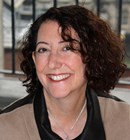A group of grantmakers in the arena of social change and human rights got together last week in Barcelona to share best practices (and failures) around funding. As part of this conversation, we held a session on impact investing, zooming in on the question of ‘could you align investments with grantmaking in an area as specific as community security and justice?’ And could we use that as a proxy to talk about aligning grantmaking and investment for any theme?
These were the challenges we set for ourselves:
• Can we find investable opportunities directly connected to our themes? If not, how far out do we need to go?
• Can we get to scale? Are there enough opportunities? And can we do this efficiently/get start-up costs repaid?
• What are the potential reputational risks, especially related to conflict/political sensitivity?
And here are a few insights we would like to share:
• If we are co-investing with others, for example in an area such as ‘security and justice’, we must clarify our definitions and objectives for the different actors. Definitions may vary significantly.
• Investing in security and justice is challenging and far from obvious: we might have indirect impact coming mostly as the result of a different area of work (stimulating entrepreneurship, empowering women, etc) but it may be hard to get right to the core for some of our issues. For example, can investing in sanitation in a slum (like Sanergy or Loowatt) address issues of personal security for women? Can investing in a women-only taxi company carrying women (like Viira Cabs in Mumbai) address security both for the worker and for the customer? Can something like CommonPlace, a community-based data-gathering tool based in London for developers and local authorities, be used for physical community security solutions input? There are no impact funds focused on human rights or security and justice that we could identify. We did talk about a conversation hosted by Impact for Breakfast in London, about two years ago, on whether one could do a social impact bond in a human rights context, and whether we could imagine one now.
• Sharing not only mistakes made (and lessons learned) but also ideas and projects could be beneficial to our group of organizations. We developed some examples of projects during prep for the session which are community-based organizations now but could spawn businesses that are investable and completely aligned.
• Donor motivations vary: some spoke about the value of moving communities from dependence on grantmakers to becoming partially or wholly independent; some spoke about using investments to further their mission with new capital and new strategies; some felt this new wave of investment is coming anyway and we have an opportunity to inform it with our unique expertise and perspective. There is a need for collaborative action with new actors from the impact investing space – otherwise new investors will come up with their own definitions of social change and human rights and run the risk not only of failure but also of adverse effects on the very problems they want to solve.
• Alignment of donors takes time: the example of some foundations investing ‘traditionally’ and using the profits to make an impact is well known. We’re looking for a whole different trajectory: ideally we would like our foundations to align investments with grantmaking to make maximum impact, and be mindful of where we invest the bulk of our capital.
• The transition from grants-only to combining grants with investments is a process: we need to find adequate staff, skills and advice. Some on the investment or grantmaking team may adapt and learn; sometimes it will be right to bring in new faces.
• The investment industry is being progressively pulled towards impact investing (both with stricter rules/regulations and requests for accountability and as a new market). The role of grantmaking foundations as an interface between traditional investing and transitional impact (‘next step’ of grant funding) is hugely important if we are to achieve the impact and outcomes that we are all aiming for.
So how do we go from here?
We agreed that bringing the unique knowledge of this community to impact investing is a real opportunity. Echoing a theme from a later session, we should be thinking about how to be at the table whether we are initiating impact investments or not, to represent the frame of social change and human rights in the strategy of new investors.
This community needs space and time to learn, and needs to take some risks. Given the objectives and the likely costs, the creation of thematic funder collaboratives could be of real value – to mitigate risk, to capture best thinking, to share the costs of R&D and start-up, and to put more capital to work than any individual funder might be ready for at the start. It would be helpful to do workshops where we engage in thought exercises around new products or investment opportunities, in safe places and in a safe environment. Grantmakers may at times be the most knowledgeable about potential impacts – unintended negative impacts as well as intended positive impacts – and could therefore play a valuable role for other impact investors.
There are many places for us to play roles as grantmakers to help grow the capacity and the ecosystem to move this forward, whether or not we are ready to invest.
Stay tuned, and let us know if you are a grantmaker who would like to collaborate with us.
Suzanne Biegel is a senior adviser at ClearlySo in the UK.
Erica ten Broeke is a Partnership Development Manager Security & Justice at Cordaid in the Netherlands.








Comments (0)